Last updated on February 28, 2024

Channel | Illustration by Rebecca Guay
Fast mana has been a thing ever since the very start of Magic. I’ve played a lot of TCGs, and the best way to get ahead is to take one of its fundamental rules and break it. In Yu-Gi-Oh! it’s by breaking the single normal summon per turn limit. In Pokémon it’s being able to play multiple energies per turn. And in Magic, it’s fast mana.
Magic’s history is littered with powerful spells that let you cheat ahead on mana, and that’s what I'm talking about today. So what are ritual spells, and what are the best ones ever printed? Let's get into it!
What Are Ritual Spells?
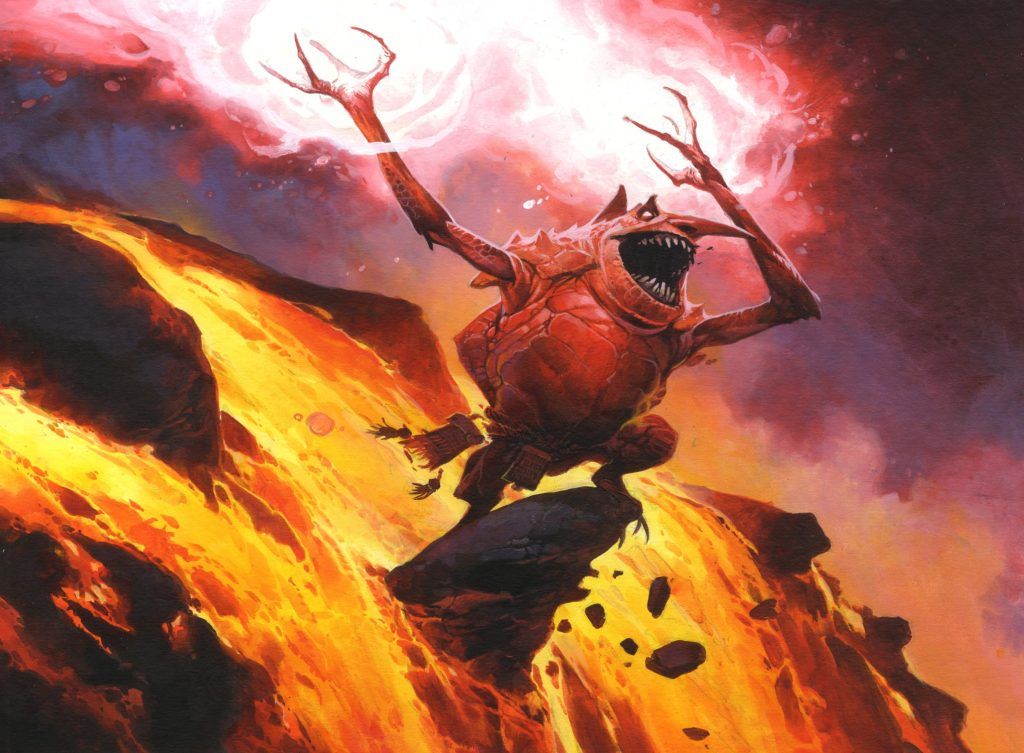
Desperate Ritual (Mind vs. Might) | Illustration by Wayne Reynolds
Ritual spells are spells that immediately give you a surplus of mana. Take the classic Dark Ritual for example. You spend one black mana and it gives you three black mana in return, letting you cheat out a 3-mana spell on turn 1.
There are lots of ways to generate mana in a game of Magic. Tapping lands for mana is the most common, but you can also have creatures, artifacts, and other permanents that can generate mana. In the case of nonland cards you typically get cards that tap for less mana than you spent to cast them, or that you can't use right away thanks to summoning sickness. The upside is you get to use them each turn.
Rituals are different. They give you a lot more mana upfront but only one shot of it, meaning you can’t reuse them turn after turn. This really incentivizes you to have something to do with your mana right away.
What do I consider to be a ritual spell? A ritual is any card that follows these rules:
- The effect gives you back more mana than you spent to play it.
- You get the mana immediately and don’t have to wait to meet a condition.
- The effect is not repeatable turn after turn.
Honorable Mentions
There are a lot of cards out there that feel like ritual spells, but aren’t.
Dark Petition
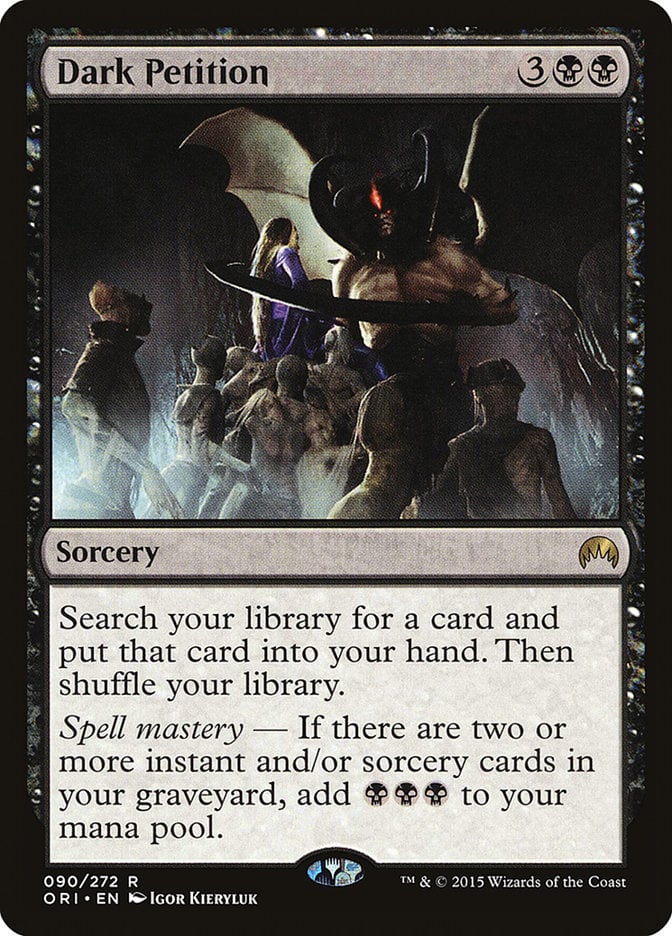
While Dark Petition adds mana and would be unplayable if it didn’t, the main reason you use this card is for the Demonic Tutor aspect of it.
Lake of the Dead
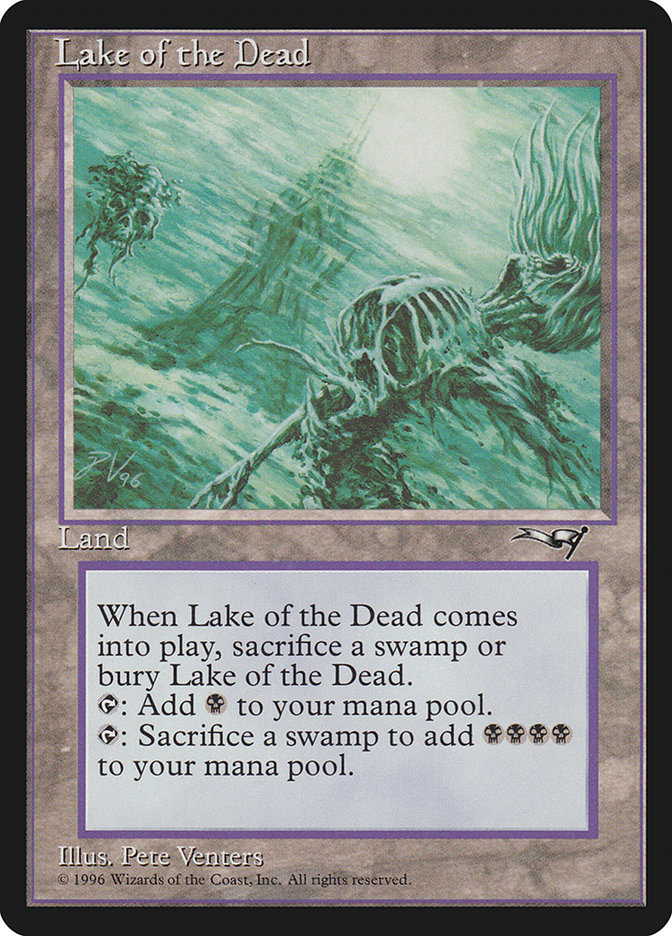
Lake of the Dead feels very ritual-like in its application, but it’s technically reusable. That said, it’s been so long since I’ve seen a deck playing it that I doubt it’s better than most of the cards on the list anyway.
All Mana Doublers
When you think of rituals, you also probably think of combo decks. Cards like High Tide and Heartbeat of Spring are basically the rituals of their respective combo decks, but the fact that they're enabled by other cards is a big drawback to putting them on this list.
High Tide is extremely close, but then you'd ask questions like “do you consider Turnabout to be a ritual?”
Krark-Clan Ironworks
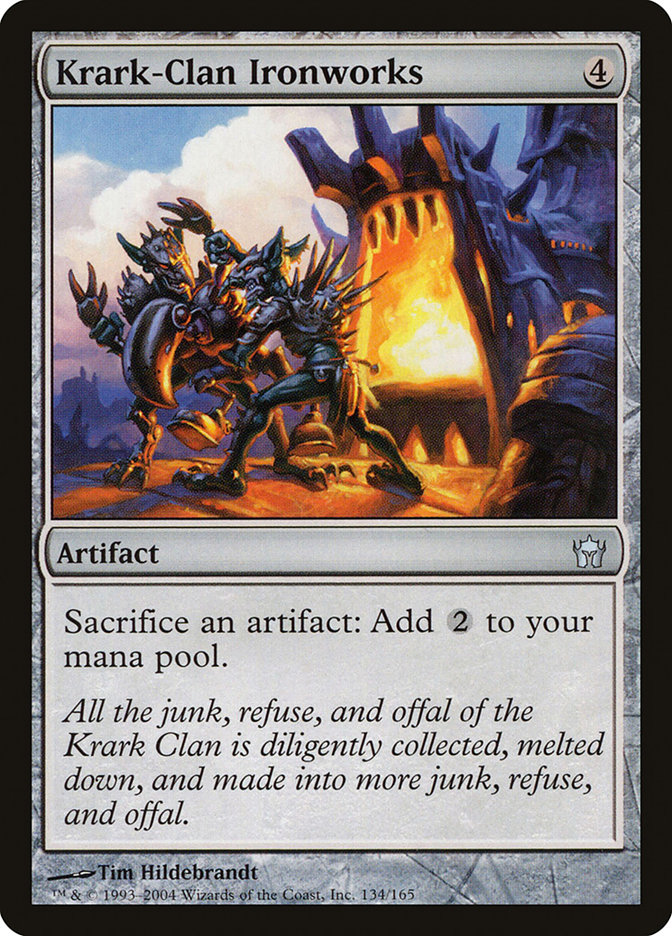
Krark-Clan Ironworks (KCI) saw a ton of play in Modern until it was eventually banned. The deck that was named after it had virtually no mana engine apart from KCI itself, and it functioned by turning all your artifacts into rituals on top of what they were designed to do.
This is a repeatable effect and doesn’t satisfy the conditions of a ritual without help from lots of other cards around it, but I wanted to point it out anyway. There are a lot of similar cards that won’t appear for the same reasons like Ashnod's Altar, Phyrexian Altar, and Skirk Prospector.
Cadaverous Bloom
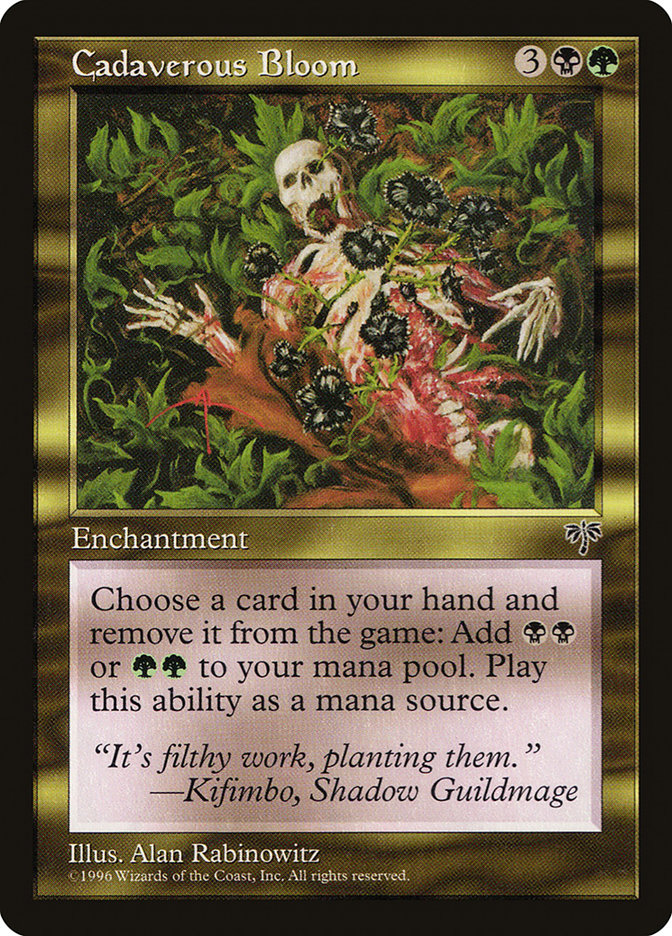
Cadaverous Bloom is the mana engine from Magic’s first real combo deck that requires multiple moving pieces to work. It doesn’t make the list for the same reason that KCI doesn’t. It feels a lot less like a ritual spell if it doesn’t just give you mana upfront, even if it’s a solid mana engine.
The Lotuses
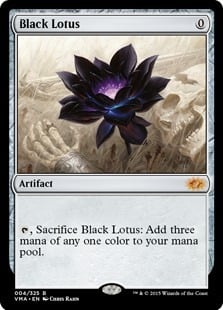


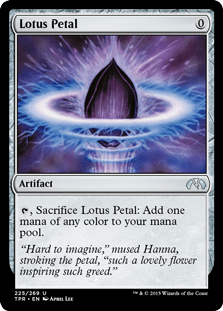
Black Lotus, Lion's Eye Diamond, Lotus Bloom, and Lotus Petal are all incredibly powerful cards that you may already be aware of. They function a lot like ritual spells, so why don’t they count?
For one thing, Black Lotus itself would be at the top of the list by default. They're also four cards that function very similarly and have played key roles in various decks over time. If I include one I’d have to include them all, so for now I’m going to say they’re not rituals and talk about some proper ritual spells.
Let’s get right into the list.
#20. Bottom of the Barrel

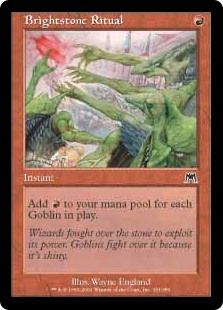
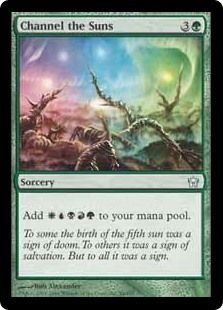
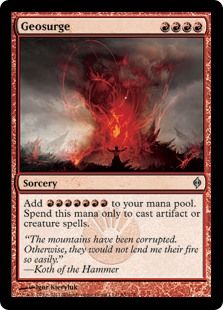
I really wanted this list to be shorter cards, so I’m adding this to round it out. There are several ritual spells that have seen very little or no play at all.
These cards and many others are either too expensive or too limiting in their application. You might be able to find uses for them, especially in the sphere of Commander.
#19. _____ Goblin

Okay, I’m sure a lot of us aren’t too thrilled about these sticker cards being legal in eternal formats, but we have to accept this fact if they’re good. There's one sticker card with six unique vowels on it and a few that have fives or four, making _____ Goblin very likely to be a ritual spell.
If you get this to be a 6-mana ritual for three mana then it’s very good (and legal) in Legacy and Pauper. I have this at the bottom of the list purely because we haven’t seen it in action yet, but it’s very possible it could jump up a few spots in due time.
#18. Chancellor of the Tangle
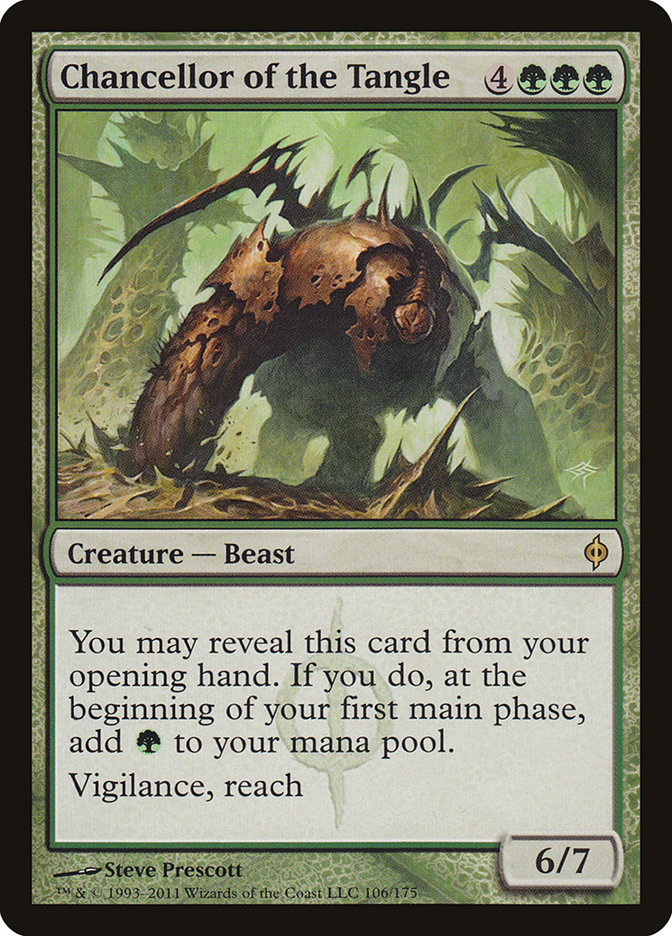
Next up we have Chancellor of the Tangle, a card that was incredibly overhyped when it was first spoiled. New Phyrexia is a hotbed of game-breaking effects thanks to phyrexian mana letting you break the color pie into tiny little pieces.
The Chancellor cycle looks a bit weird, but the idea that you could see an opening hand with a Chancellor and get a free effect for your first turn was something that initially looked very appealing. Getting one extra mana on your first turn seemed like something that would be incredibly broken, but sadly it never lived up to the hype.
Most combo decks don’t need that mana on the first turn so it never really amounted to anything. It has definitely shown up in a few decks, like the Neoform combo decks in Modern.
#17. Culling the Weak
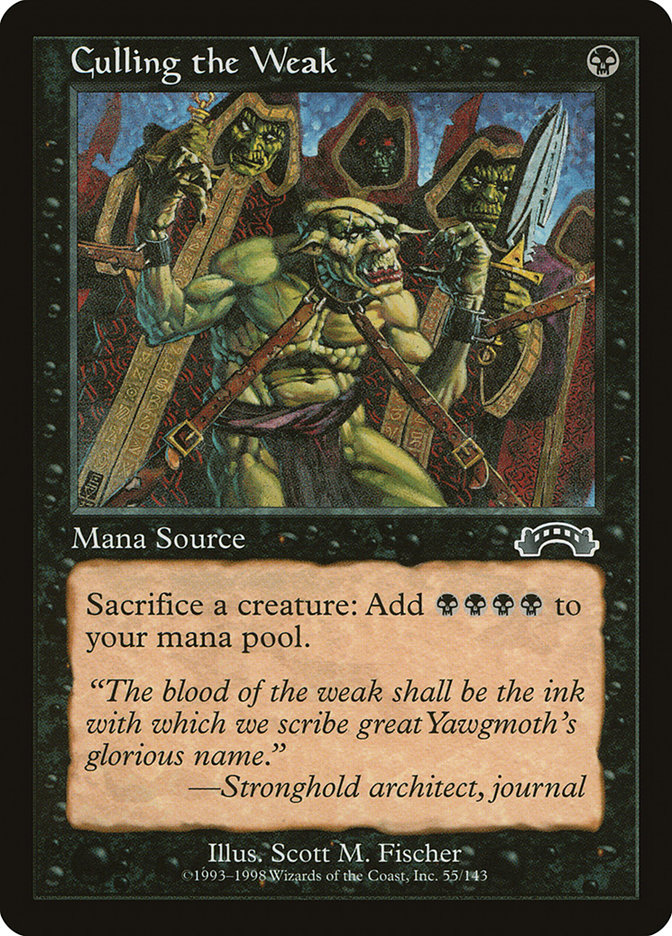
Nobody expects The Spanish Inquisition!
No, I’m not referring to a Spanish language print of Inquisition of Kozilek. I’m referring to a Legacy deck. Spanish Inquisition is the name of a typically black-based storm deck that uses 0-mana creatures like Memnite and Ornithopter as fodder for Culling the Weak.
Although it requires a creature, spending one mana and getting back four is a deal better than most other ritual spells can give you. Sadly this deck has completely disappeared from the game as the game has become more powerful over time. I can’t even remember the last time I saw it in an event.
#16. Mana Geyser
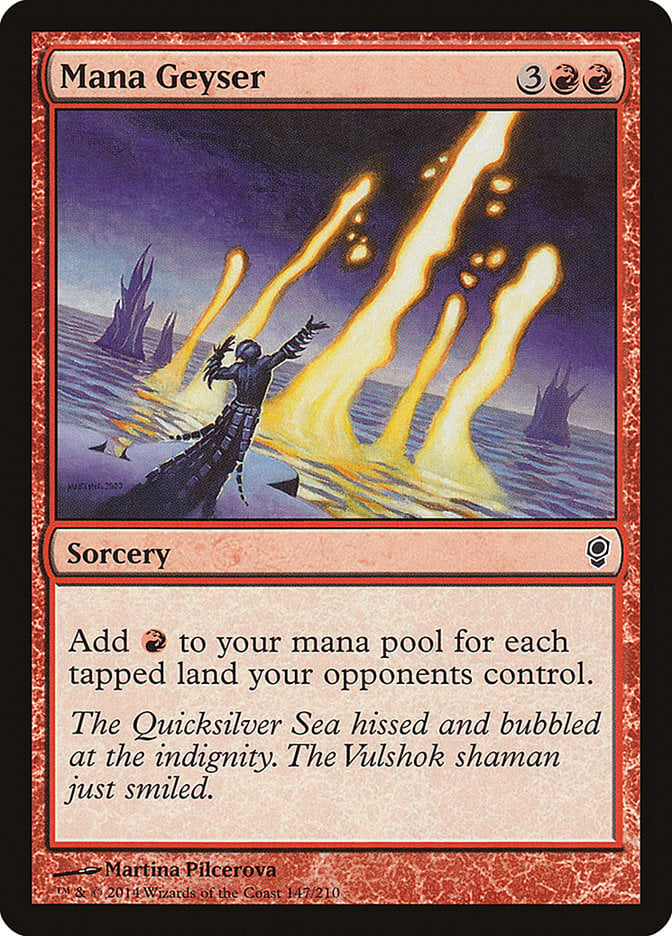
I remember seeing Mana Geyser going around the table in Chaos Drafts and thinking it was complete garbage. I was right, but then Commander came about and suddenly it became a 5-mana ritual that could give you 15 red mana in return.
This might be one of the best rituals you have access to for Commander and it's capable of some very disgusting turns.
#15. Irencrag Feat

It took some time but ultimately we learned to never underestimate the power of Throne of Eldraine.
We’ve had cards like Irencrag Feat before, namely Geosurge, which are big and powerful ritual spells with a condition on them that stops them from being broken in combo decks. The condition on Geosurge made it wildly unplayable, and for a long time we thought that about Irencrag Feat too. But then Ugin, the Spirit Dragon was printed and a new deck arose.
What if you just ritual Ugin out on turn 5? This idea spawned a mono-red control deck that used burn spells to control the board before using Irencrag Feat to cast Ugin a lot earlier than expected, taking full control over the game from that point.
We have seen Feat do some work elsewhere too, but this was one of my favorite Standard decks from the past couple of years.
#14. Open the Omenpaths
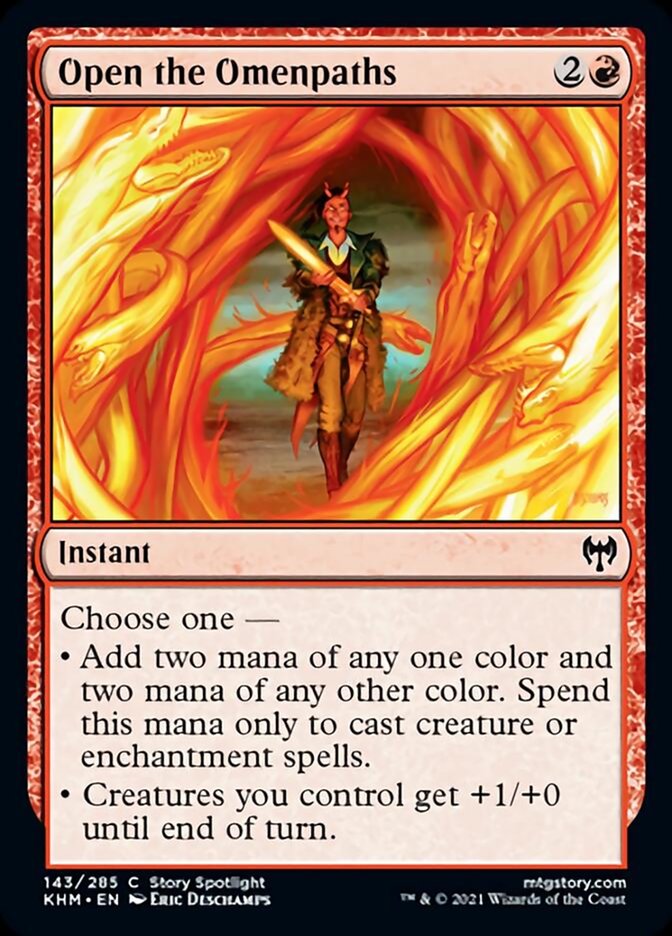
Speaking of rituals that looked really bad, Open the Omenpaths looked embarrassingly bad when it dropped in Kaldheim. It was one of the most common last picks in Drafts and looked like it was just going nowhere.
But Vadrok, Apex of Thunder looked perfectly designed to make use of it. Not only does Open the Omenpaths cast it by itself thanks to the hybrid mana of Vadrok’s mutate cost, but Vadrok also flashbacks the ritual with its trigger.
This spawned all sorts of Jeskai () mutate combo decks that culminated in a build that ended up dropping Open the Omenpaths but became one of Standard’s best decks until Vadrok rotated.
#13. Songs of the Damned
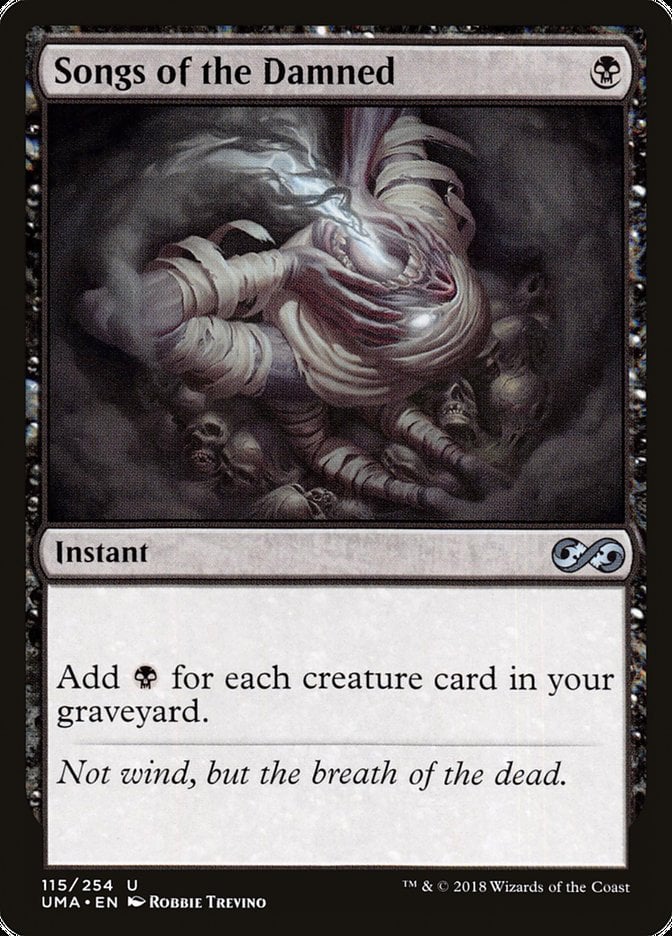
Songs of the Damned is another ritual that looks like it has a lot of potential but ends up falling short of the mark because it requires a lot of setup to actually be good. This ritual is capable of giving you 10 or more mana for just one if you can fill your graveyard in some way.
Few decks are capable of that, but cycle storm in Pauper can do it. The deck revolves around cycling a lot of creatures into the graveyard and then using black rituals like this to cast big threats and use Reaping the Graves to recover the cycled creatures. It’s a hilarious deck to see going off and is very powerful.
That deck also probably wouldn’t exist if not for Songs of the Damned, so the card deserves a spot on this list for that reason alone.
#12. Tinder Wall
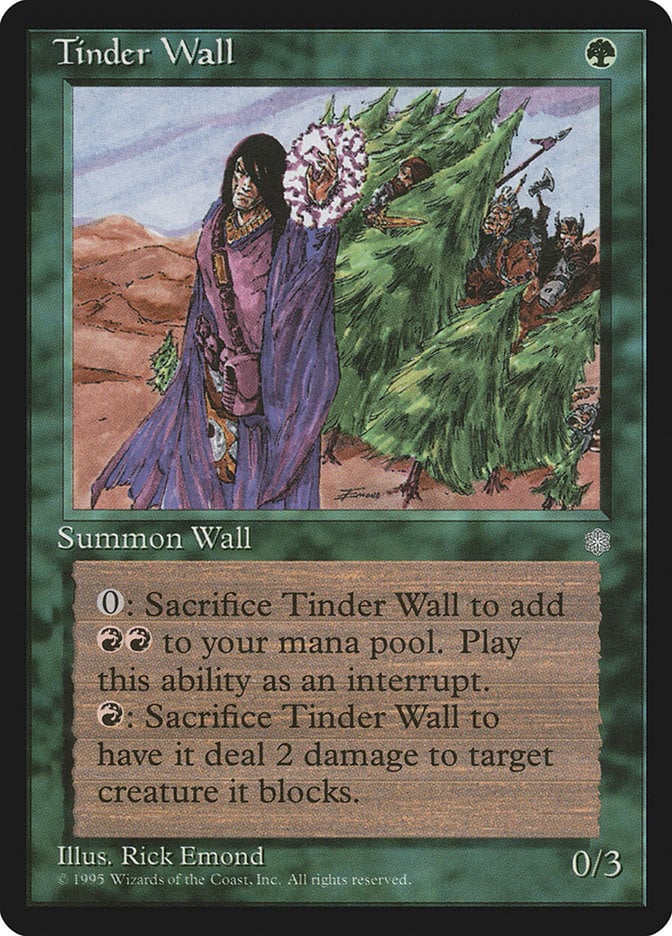
Tinder Wall is a curious card with a nice effect that turns one green mana into two red mana. The best part about it is something that's a sort of pattern among the best cards on this list: it can be cast for just one mana.
The simple ability to start your storm combos on turn 1 instead of turn 2 is a very potent effect, and it goes a long way toward making this unique ritual playable. Legacy Belcher is heavily focused on red and green mana, making this a great inclusion.
But the one green cost tends to price it out of most decks that usually want ritual spells, which limits its power level quite a bit.
#11. Jeska's Will
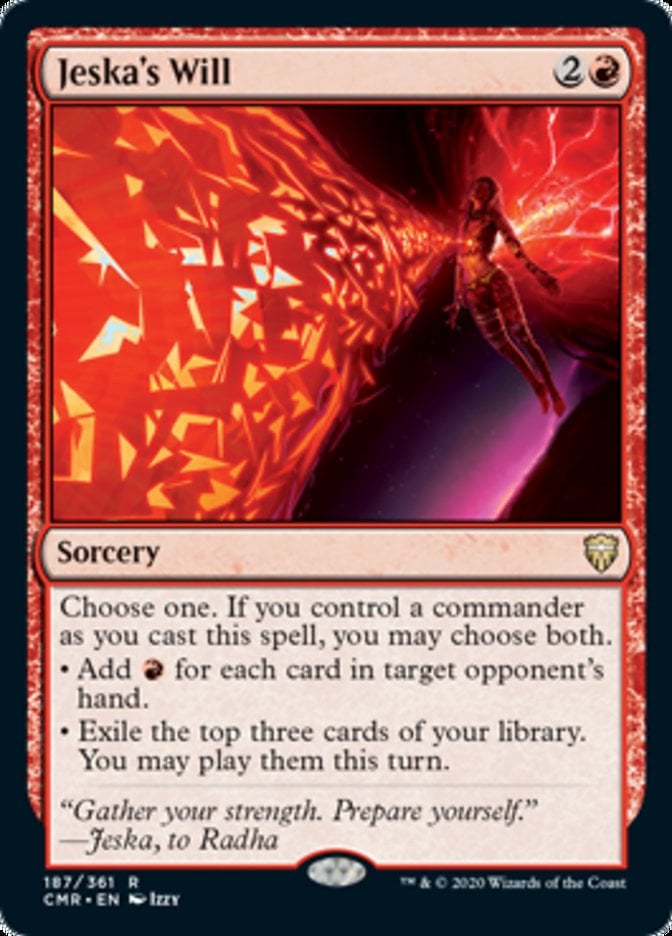
Jeska's Will originally looked to be a bit too temperamental for Legacy play, and I’m sure many assumed it would remain relegated to Commander decks. But that all began to change about a year ago as Ruby Storm surfaced.
This incredibly budget-friendly Legacy deck debuted on the scene and notably featured Jeska's Will. The build is entirely mono-red and uses Ruby Medallion to make its already-decent red rituals even better. Combining them with Birgi, God of Storytelling and Bonus Round means you get a ton of mana very quickly and use red’s various draw spells to put together a storm win.
There’s also a new Legacy deck called The Epic Gamble that similarly uses Jeska's Will and other rituals with Echo of Eons as a draw engine. It looks like the card is doing more than enough to earn its keep in the format, and it’s also a sweet bomb for Commander.
#10. Manamorphose
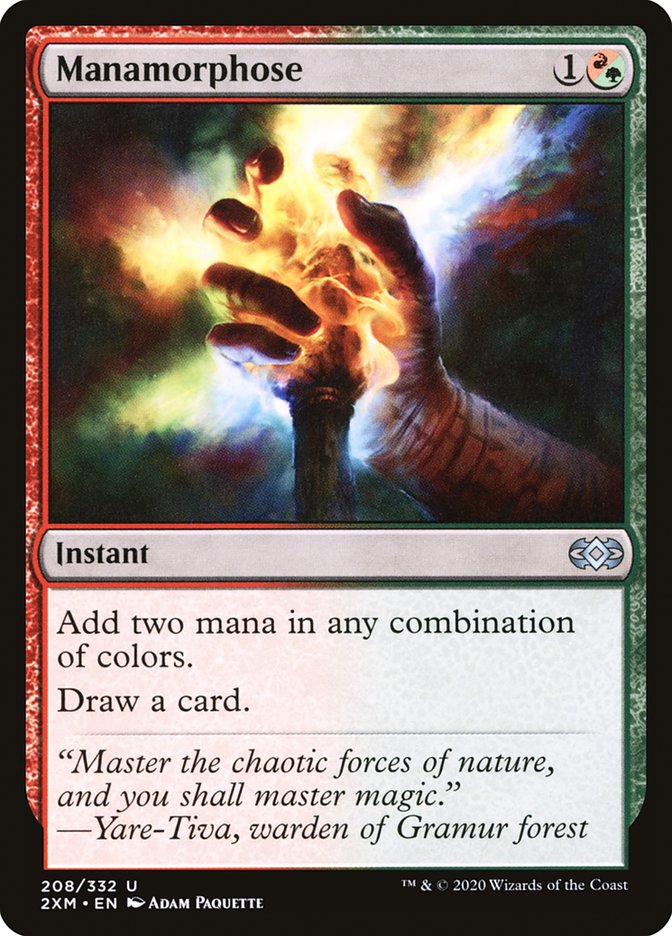
Okay, so Manamorphose doesn’t net you any mana, it just filters it. Technically it shouldn’t count as a ritual, but it still ends up being used as one quite a lot of the time.
It’s also very easy to reduce this card's cost so it only costs one mana. Whether you do it with Ruby Medallion in Legacy or with Goblin Electromancer and Baral, Chief of Compliance in Modern, you’re going to make this cost one mana. Even if you can’t, it’s always going to be played in the same decks.
Maybe you don’t consider Manamorphose to be a proper ritual spell, but I think we can give it an honorary title for all of the work it’s done in making unfair decks just that little bit more unfair, don’t you?
#9. Pyretic Ritual
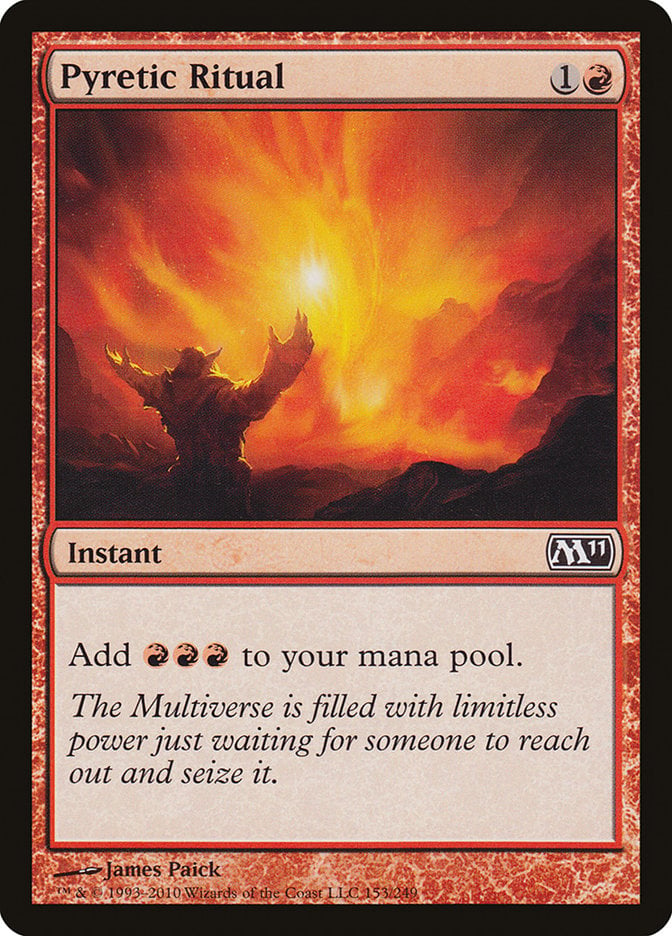
It’s as simple as it gets, but Pyretic Ritual is more than good enough to be the backbone of red-based storm decks across multiple formats. I’m also cutting this short because whenever you see Pyretic Ritual you also see its strictly better cousin…
#8. Desperate Ritual
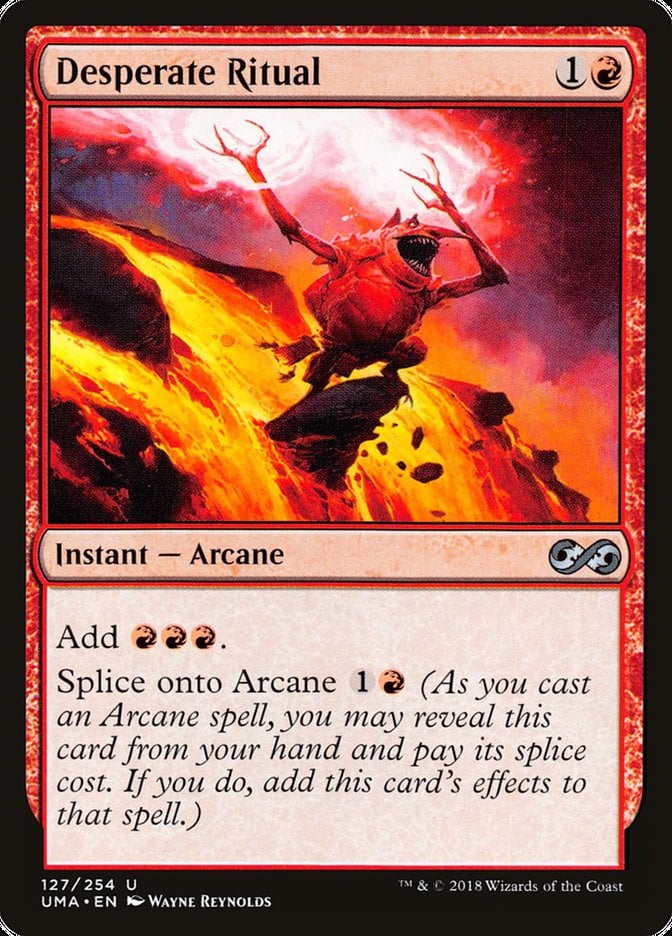
Yes, the pair of Desperate Ritual and Pyretic Ritual are really what red storm decks are all about. From Legacy Belcher and Ruby Storm to Modern Izzet () Storm, it’s the existence of these two cards that make all those decks possible.
The splice mode of this is also very relevant. If you have four mana you can cast a ritual and splice a second one to get an extra mana for free. Both of these red rituals are mainstays of competitive Magic for a very long time, and I assume they'll continue to be for some time.
#7. Elvish Spirit Guide

Entirely free mana is probably good, right? It absolutely is, but the green mana from Elvish Spirit Guide isn’t often the most useful mana to get from a ritual. Storm decks focus more on red, black, and sometimes blue mana, and green decks can already ramp themselves pretty effectively.
But free mana is still very good, and Legacy Belcher decks are very green heavy. It’s been seeing a little more play recently thanks to Minsc & Boo, Timeless Heroes, but the main thing holding it back is being confined to the annals of Legacy.
The Spirit Guide's planeshifted monkey look-alike version has seen a lot more play thanks to being printed a lot more recently, but the card is still very powerful and shows up from time to time to remind you that it exists.
#6. Seething Song

There are two features that are common among all of the best rituals on this list. They either provide you with two or more mana above what you paid, or they cost one mana. Seething Song is a perfect example of the former. It was even powerful enough to require a ban in Modern to curb the power level of Izzet Storm.
Pyretic Ritual and Desperate Ritual are also very good, but it’s very difficult to get up to the amounts of mana that you need to cast payoffs like Past in Flames and Gifts Ungiven unless you make them cost less. Seething Song made it significantly easier to do that without trying too hard, which earned it a well-deserved spot on the Modern ban list.
#5. Cabal Ritual
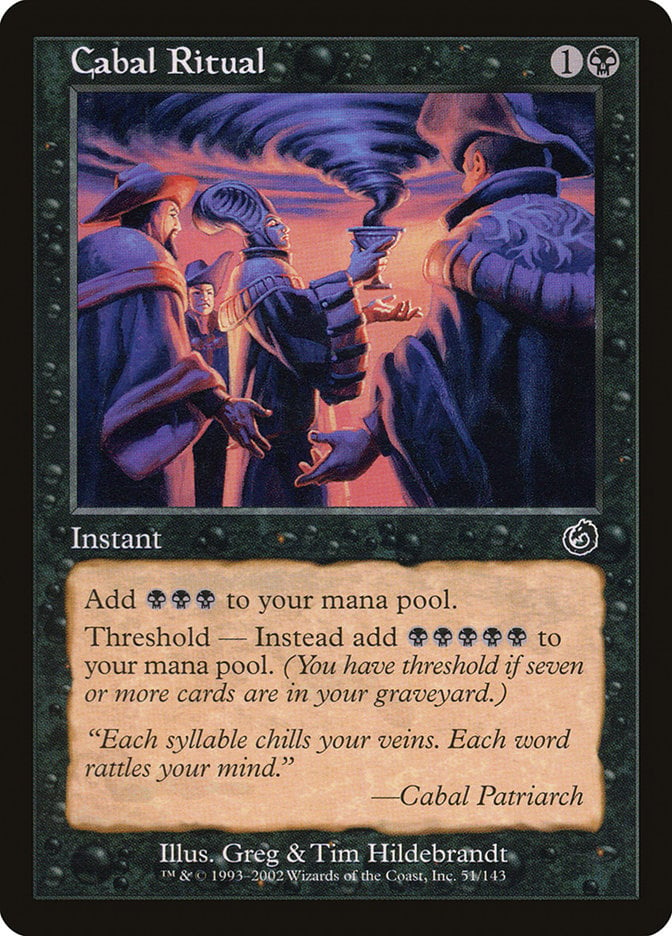
If Seething Song letting you trade three mana for five is good enough to be banned in Modern, how do you think Cabal Ritual would manage?
Threshold is trivially easy to get to in decks that play rituals given that you play lots of instants and sorceries. That plus the usual fetch lands means this almost always lets you trade two mana for five, a deal that's perfect for the black-based storm decks of Legacy and Pauper.
#4. Simian Spirit Guide
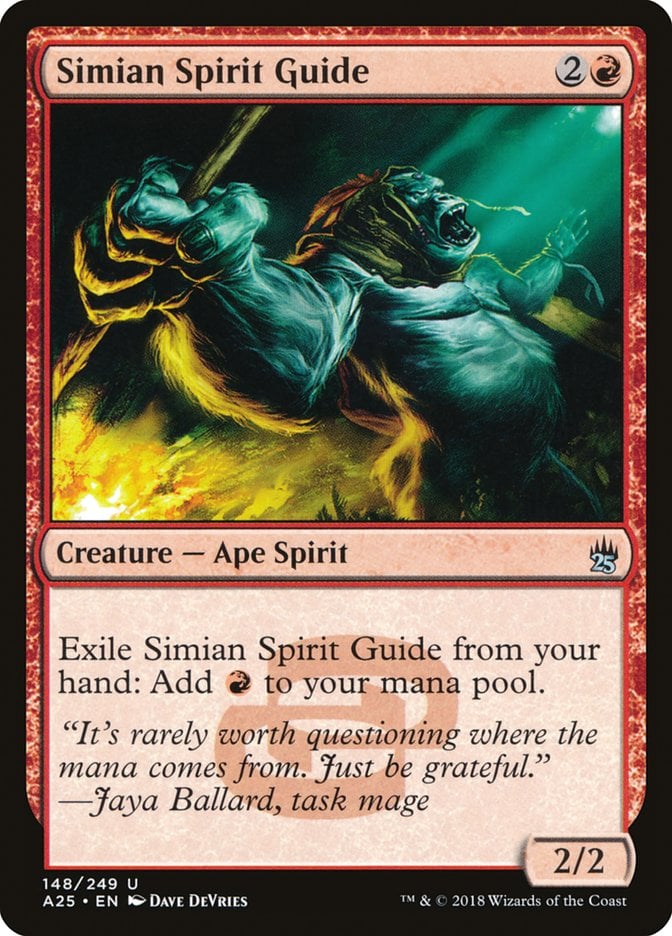
How Simian Spirit Guide remained legal in Modern for so long is beyond me. This color-shifted variation on Elvish Spirit Guide was a part of nearly every inherently unfair deck in Modern for several years. From Griselbrand to Ad Nauseam and even the Eldrazi decks of the fabled Eldrazi Winter.
Accelerating out bigger spells is something that all rituals are capable of, but doing so without even needing an initial mana investment makes this a uniquely powerful card. You don’t even need it in a red deck thanks to it not requiring a mana cost, and paying for a generic mana cost ahead of schedule is more than enough for the card to be good.
While now banned in the format, this Spirit Guide is still incredibly powerful in Legacy and remains one of the most broken and unfair cards in the game.
#3. Rite of Flame
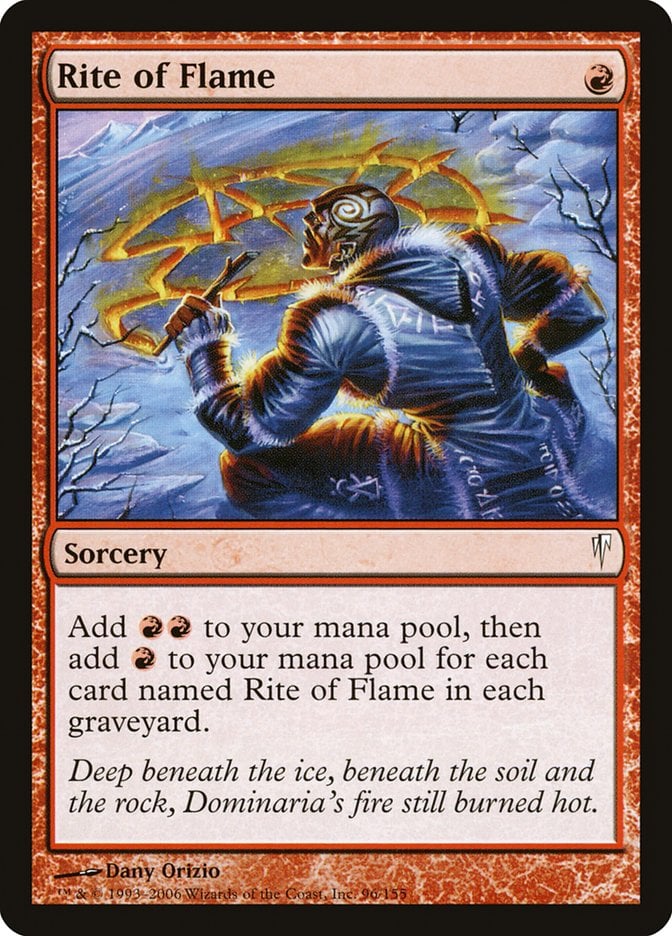
While Rite of Flame might look no different from Pyretic Ritual or Desperate Ritual at first glance it has one very key difference: it can be cast for just one mana. This is often the difference between being able to cast it on turn 1 instead of turn 2.
Let’s say you have a deck full of red rituals but they all cost at least two mana. You wouldn’t be able to start doing things until turn 2. Rite of Flame, along with Moxen and the Spirit Guides allows you to cast these right away.
There was a deck in the format called “All-In Red” at my first ever competitive REL tournament. The point of the deck was to play all of the red ritual spells and cast big 5-drops on turn 1. That deck wouldn't have been able to combo off this quickly if it weren’t for Rite of Flame and Simian Spirit Guide.
Rite of Flame was one of the earliest bans in the Modern format and has pretty much no chance of coming back because of that deck and the many other application it has in storm decks.
#2. Dark Ritual
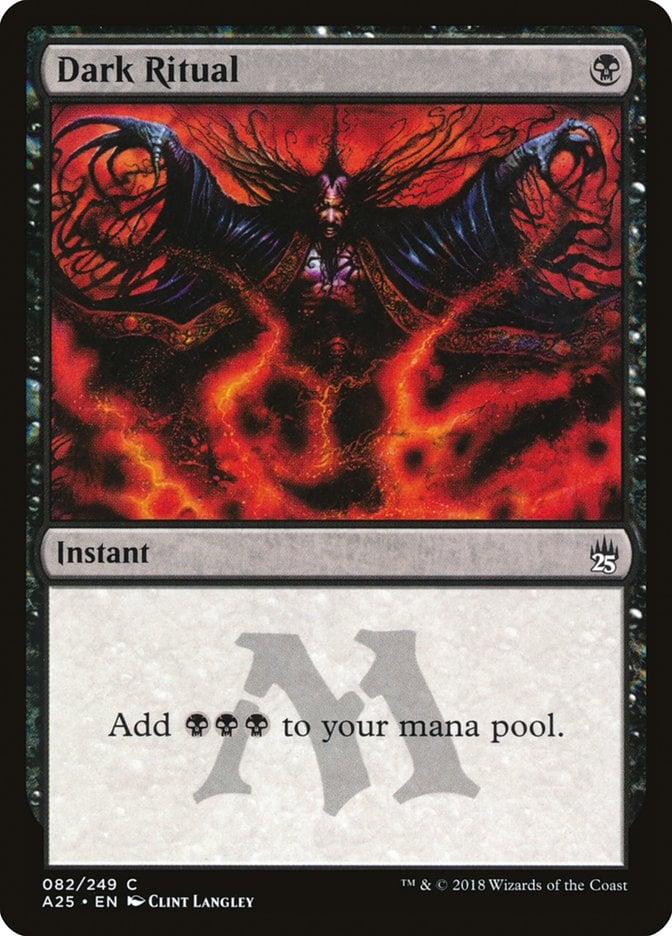
The boons was one of the game’s first-ever cycles back in Alpha. It's a cycle of 1-mana instants that give you back three of something. Healing Salve gives life, Ancestral Recall gives you cards, and Dark Ritual gives you three black mana.
This ritual is still one of the game’s strongest ritual spells. Not just because it gives you back two extra mana like Seething Song, but because it costs just a single mana. The ability to power out a more expensive spell on turn 1 has become synonymous with this card.
While still legal in Legacy and Pauper, ban discussions are ongoing in the community, and a case could certainly be made for banning it in Pauper. But this is such a classic card that keeping it legal in the format is its own kind of benefit. Especially since Dark Ritual is the whole reason we call these cards “rituals” in the first place.
#1. Channel
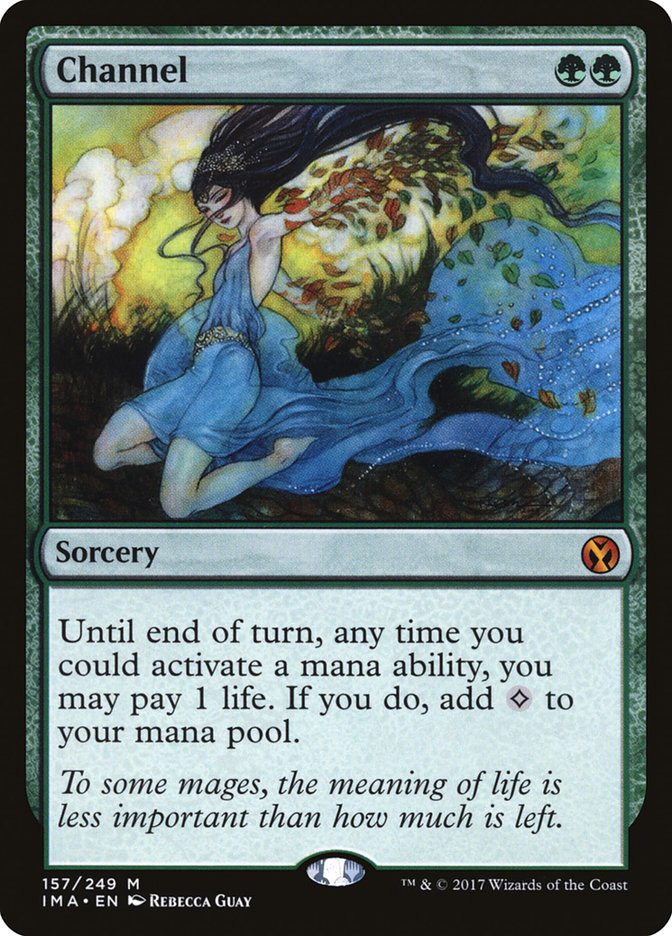
Channel is banned in Legacy and Commander and restricted in Vintage. While most rituals let you gain an extra one, two, or three mana on top of what you paid for them, Channel lets you turn two green mana into as much colorless as you can afford with your life total, which is enough to power out a massive X spell like Fireball or Emrakul, the Aeons Torn.
Being a permanent fixture of the Magic Online Vintage Cube, you can regularly see this card's full power on display. It frequently wins games on turn 2 or even turn 1 if you’re also lucky enough to get Mox Emerald.
Sometimes you just can’t beat a classic card.
Wrap Up

Simian Spirit Guide | Illustration by Lucas Graciano
Rituals have been a key part of Magic for going on 30 years now. Do you think I missed any important cards from the list? Would you do the list in a different order? Let me know in the comments below or over in the Draftsim Discord.
Until next time, take care of yourselves!
Follow Draftsim for awesome articles and set updates:

Add Comment